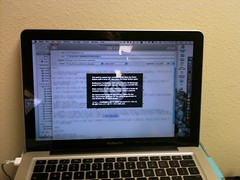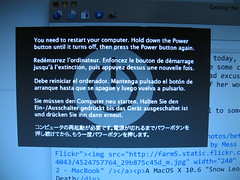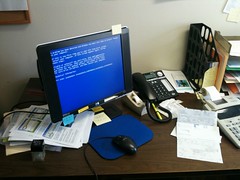My secretary’s PC crashed today. I don’t know what’s wrong with it, and didn’t have time to investigate. So I made some obnoxious Mac fanboy-type remarks about silly Microsoft and its sad excuses for operating systems. (Then I told her to make do as well as she could with a pencil and calculator.)
So this afternoon, my MacBook Pro BSOD’d on me:
Which is pretty shocking. I’m not sure if this might be the first time it’s done that. I know I’ve seen this BSOD screen before today, but it might have been on the iMac at work, or the other Mac at home.
But I just got a second chance to study the phenomenon. Just as I was blogging the above, it panicked again:
Twice. In one day. The day my secretary’s ancient PC belly-upped and I made superior remarks about the sad, sad mistake called Windows XP. Oh the irony of it all.
What the heck did Apple put in that last Security Update? Or was it Snow Leopard 10.6.3?




